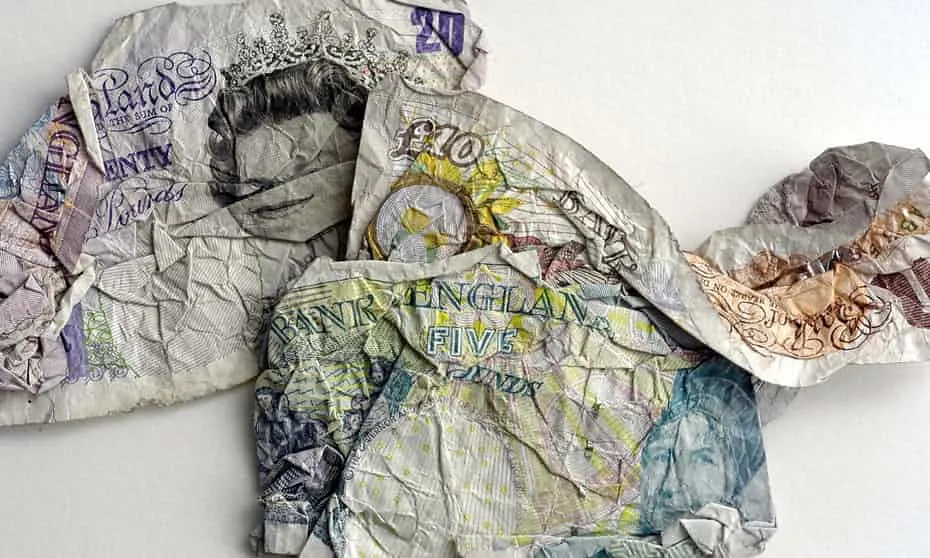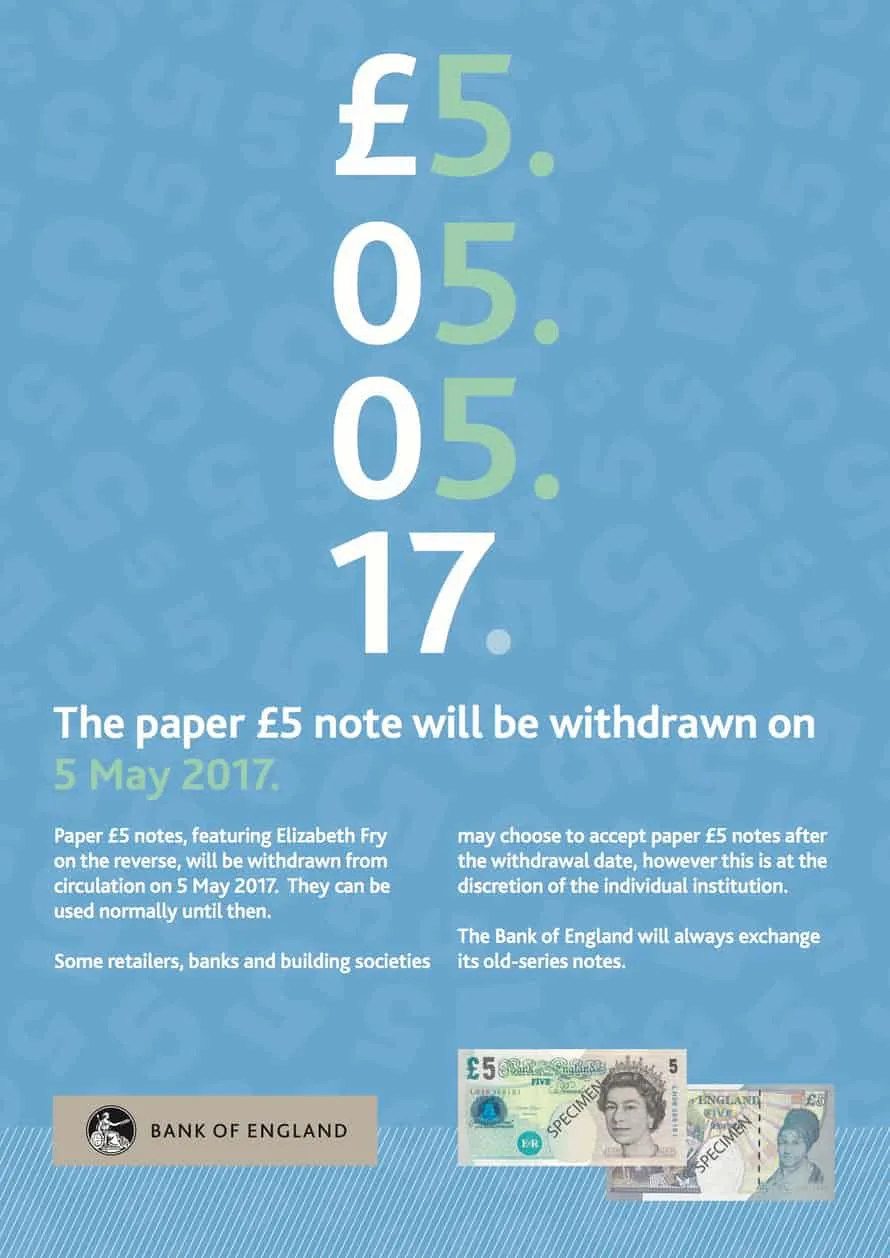
In the biggest changeover in currency since decimalisation, on Friday 5 May the paper £5 note will no longer be legal tender – yet as recently as the start of April there were still 160m of them in Britain’s wallets, money boxes and (if you’re lucky) under the sofa.
Already shops across the country are beginning to display “£5.05.05” posters telling people that the end of the cotton-paper note, first issued in its current shape and size in 1990, is nigh. After that date no retailers are obliged to accept them, though that doesn’t mean they become worthless overnight.
As the Bank of England is keen to point out, its notes retain their face value “for all time”. Some retailers, banks and building societies may choose to accept them after 5 May, entirely at their discretion. Eventually they will pull the shutters down.
But the bit on the note that says “I promise to pay the bearer on demand the sum of five pounds”, signed by current chief cashier, Victoria Cleland, remains in place. If you find a stash of fivers in a few years you won’t be able to spend them in the shops, but will have the right to demand that the Bank of England swaps them for new ones.

In Scotland, leading banks started issuing their own polymer fivers last autumn, and since then they have gradually been withdrawing the paper version – however, there is no specific published final end date. (There are no plans by note issuers in Northern Ireland to switch to polymer, though one, Northern Bank – now Danske Bank – was the first in the UK to issue a polymer fiver way back in 1999.)
Oddly enough, you may in future end up eating the remnants of the old £5 notes. Those returned to the Bank of England will be recycled and turned into fertiliser. “This is done using a composting treatment and the end product is used as a soil improver for agriculture,” says the Bank.
Should you put an old fiver aside in the hope that one day it could be worth something to collectors? Sadly not. Between 2003-04 and 2015-16, 1,898m were issued, so they are unlikely to ever gain rarity value.
Simon Narbeth of notes dealer Colin Narbeth & Son says only £5 notes with the HA01 number, issued in 2005, have any value to collectors. A short production run had serial numbers that rubbed off, and they now change hands for around £20. Notes with very early serial numbers also command a premium, although we are talking about hundreds, not thousands.
Perfect mint condition 10 shilling notes, withdrawn in the 1970s and replaced by the 50p coin, are only worth £2, says Narbeth, and used ones go for just 50p. That’s the same as the Bank of England will pay if you present one at its Threadneedle Street office.
The introduction of the polymer £5 notes has been regarded as a success – barring the battle with vegans (see below). The polymer £10 note (also containing traces of animal fat) is set for launch in September this year. It will feature Jane Austen on the reverse, and the Bank is using the 200th anniversary of the writer’s death on 18 July to officially unveil it.
The new tenner will be smaller than the current one – but larger than the new fiver. The size ratios will be the same as those between the old paper fiver and tenner.
Thank for reading !!